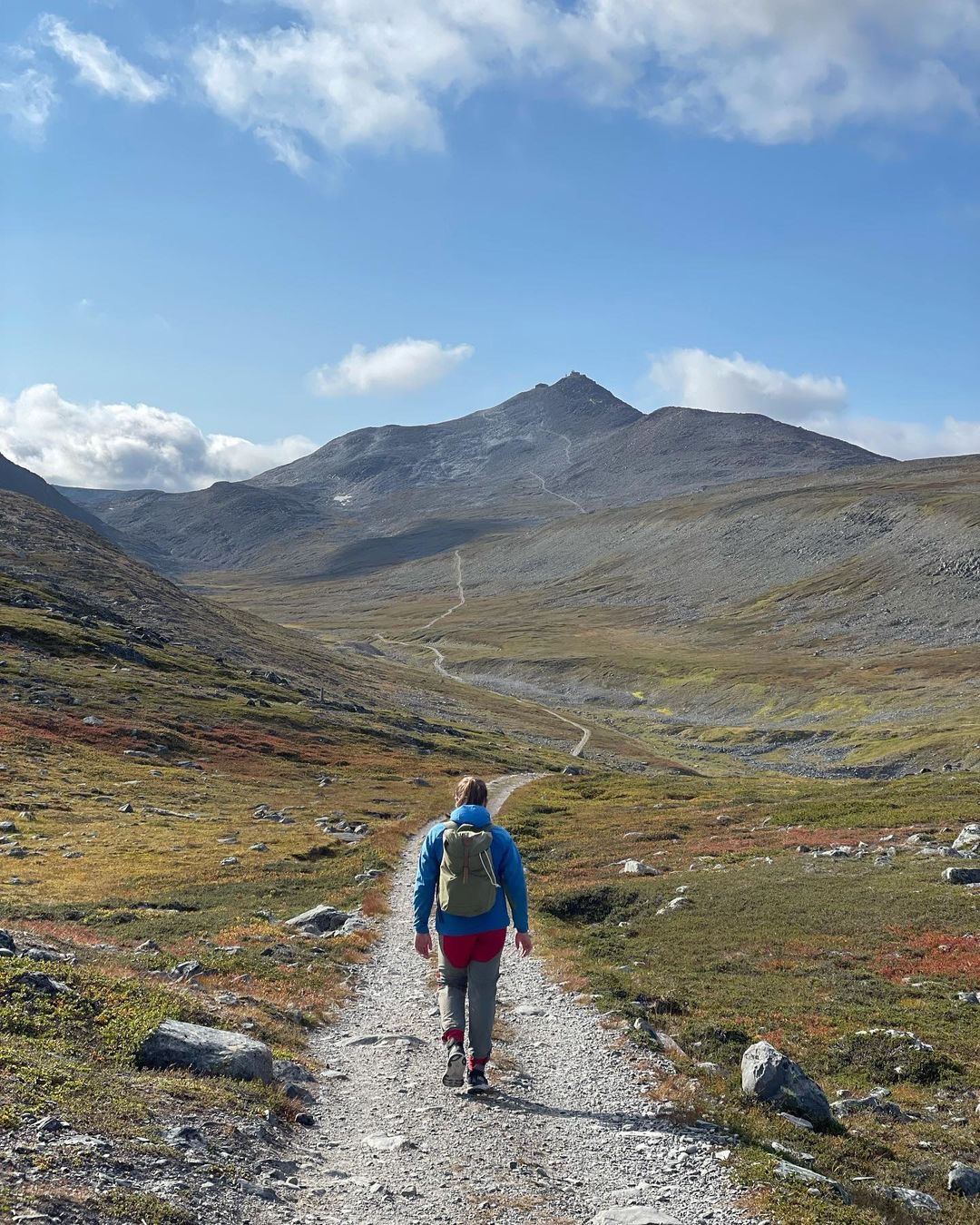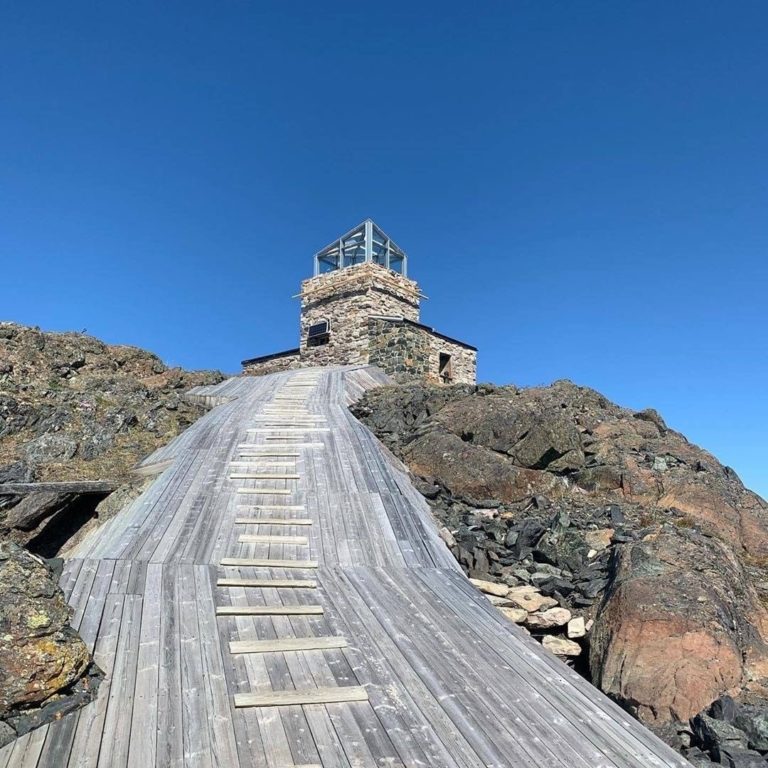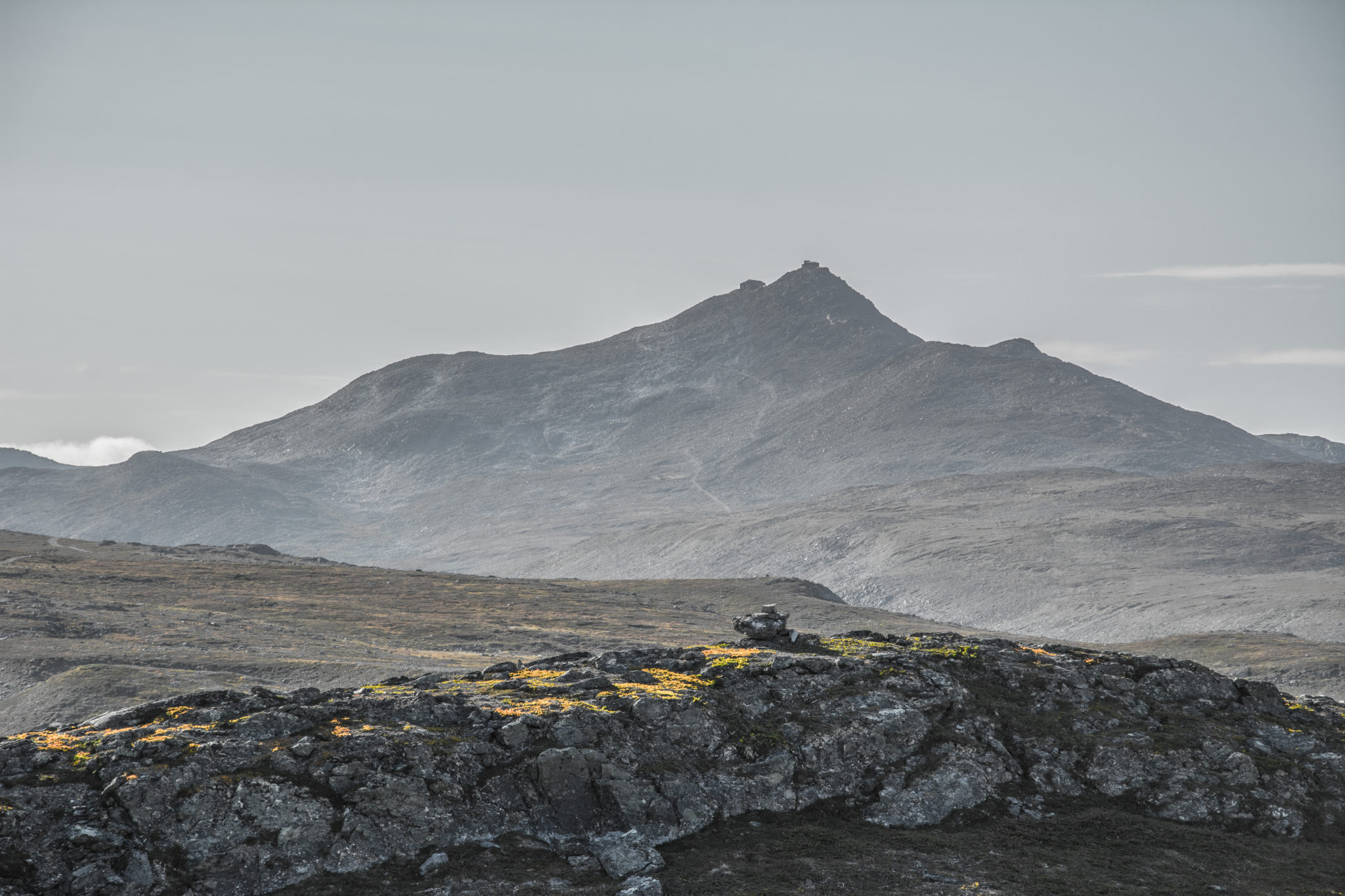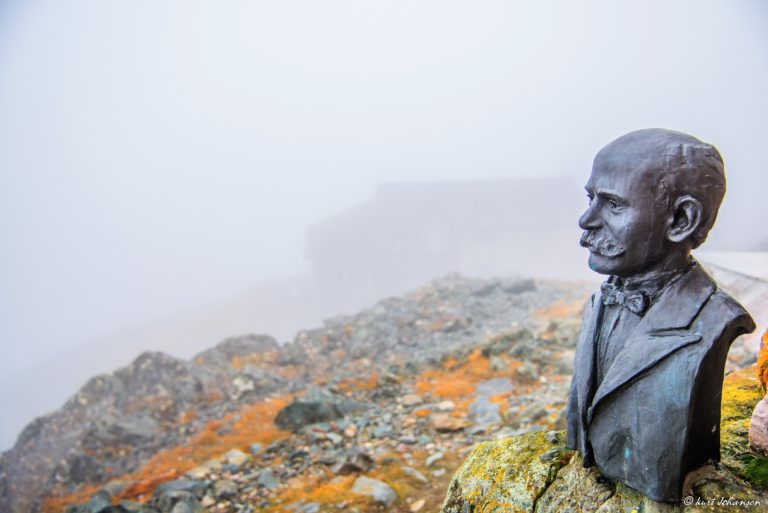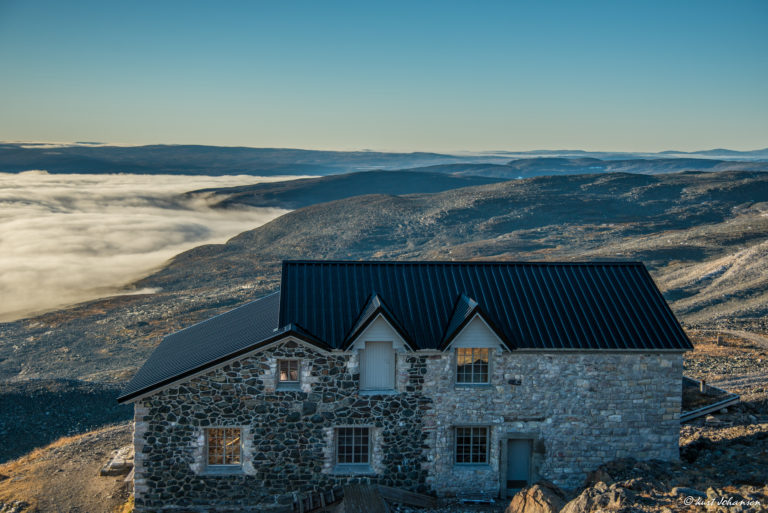Mount Haldde is clearly visible in large parts of Alta. The highest mountain peak in Alta is a nice hiking destination that also offers culture and history.
On the map, the starting point for the trip is marked.
Mount Haldde used to be the center of northern lights research and today there are two historic buildings on the mountain. The world’s first permanent Northern Lights Observatory was built here by Kristian Birkeland in 1899. In 1915, a residential building was ready for those who worked at the top. In 1926, the business was moved to Tromsø.
The trip to Mount Haldde starts from Kåfjord on a permanent T-marked path / cart road all the way to the top. The trip takes about 6 hours and is relatively steep in some areas. The cart road starts 400 meters north of Kåfjord church. There are limited parking options in this area.
Haldde means sacred mountain in Sami, while Birkeland called it Mount Sugar. Today, most people know the summit as Haldde and it is clearly visible in large parts of central Alta.
But how is it that Halddetoppen in Alta housed the world’s first permanent aurora borealis observatory? This is of course related to the fact that Alta is one of the best places to study the Northern Lights, but also because a French expedition did excellent research down by the Altafjord in the 1830s.
Professor Kristian Birkeland took the initiative to build the Northern Lights Observatory at Haldde, while the government financed the construction and operation. Birkeland overwintered on Haldde from the 19th to the 20th century. Although much research was done on Haldde during this period, the Bossekop district is also an important place for northern lights research.
In 1910, funds were allocated for permanent operation and expansion of the observatory at Halddetoppen. A total of 17 people lived at most in Haldde. And during the years the observatory was in operation, three children were born up here. In 1912, a new building was completed, which was later expanded, and housed the researchers and their families.
The adventurous life at the top of Alta ended in 1926 when the government decided to close down the research center at Mount Haldde. Two years later, the new Northern Lights Observatory was ready in Tromsø. In 1944, the Northern Lights Observatory and everything that belonged to it were burned down by German occupation forces. Only the solid walls remained after 80 years of aurora borealis research. In the 1980s, the restoration of the buildings began.
Today, the observatory building is operated by DNT Alta as an unattended DNT cabin and is adapted for accommodation on a year-round basis with 6 beds.
Even though Northern Lights research of the same caliber is not conducted in Alta today, the Northern Lights still dance across the sky and tempt tourists from all corners of the world to experience the phenomenon. Birkeland’s theories also became central to further Northern Lights research.
